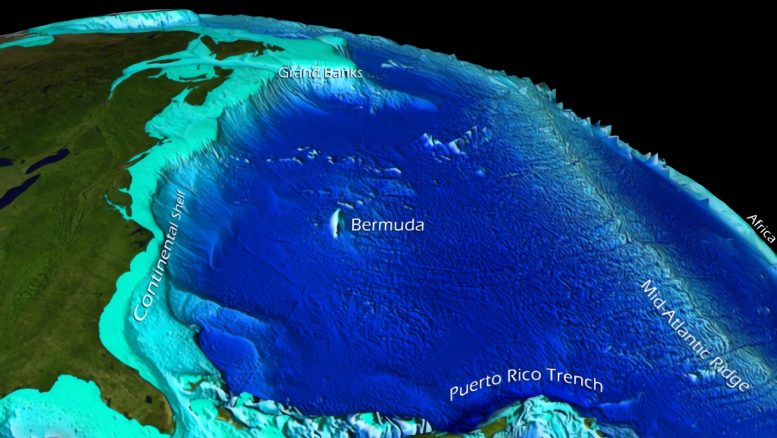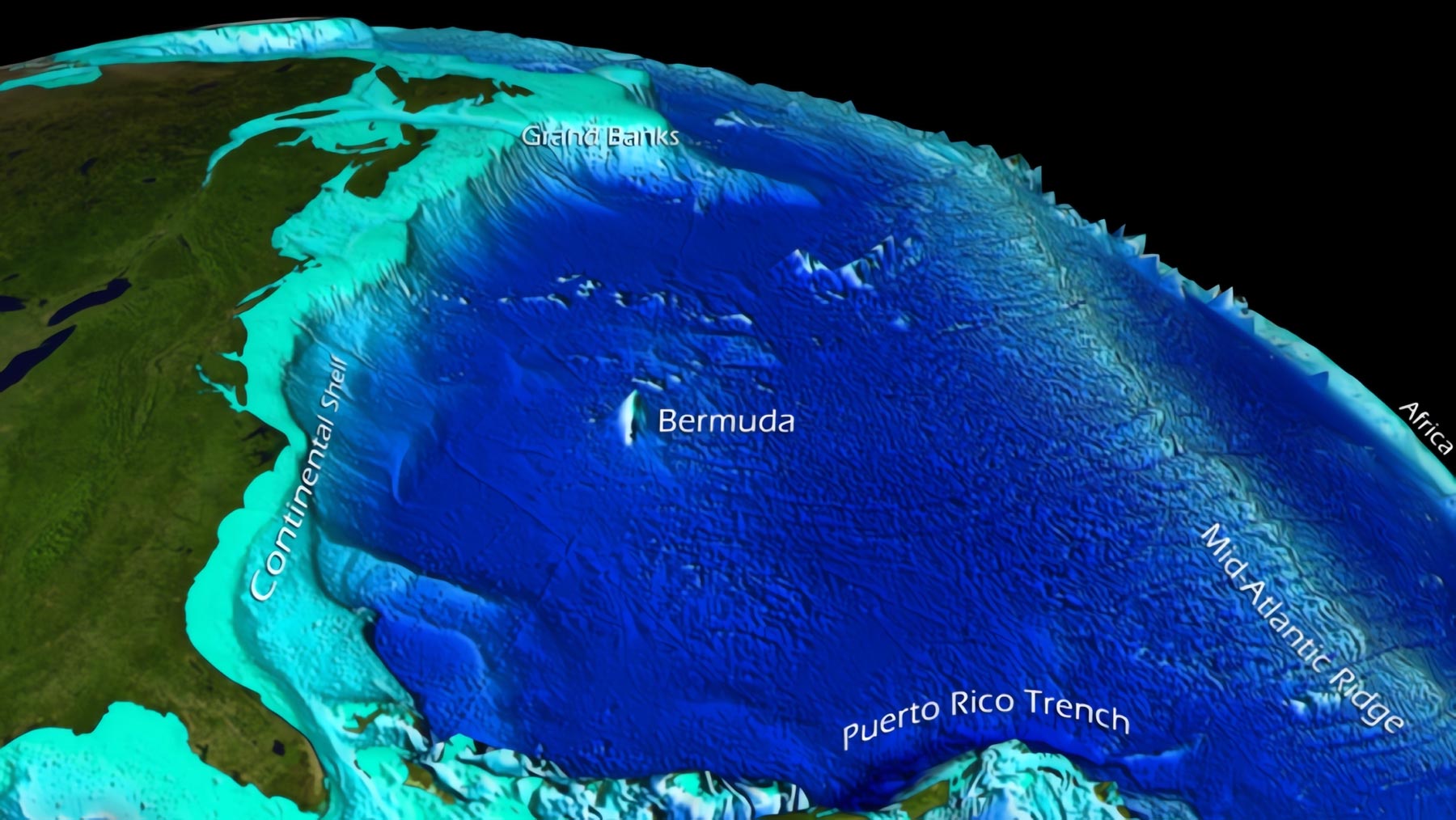
This visualization depicts bathymetric features of the western Atlantic Ocean Basin, including the continental shelf, captured by satellite. Credit: NOAA’s National Environmental Satellite and Information Service
First assessment of bottom marine heat waves opens a window on the deep.
The 2013-2016 marine heat wave known as “The Blob” warmed a vast expanse of surface waters across the northeastern Pacific, disrupting West Coast marine ecosystems, depressing salmon returns, and damaging commercial fisheries. It also prompted a wave of research on extreme warming of ocean surface waters.
But, as new research shows, marine heat waves also happen deep underwater.
A new study by NOAA researchers, with co-authors from the National Center for Atmospheric Research (NCAR) used a combination of observations and computer models to generate the first broad assessment of bottom marine heat waves in the productive continental shelf waters surrounding North America.
“This research is particularly significant as the oceans continue to warm, not only at the surface but also at depth, impacting marine habitat along continental shelves,” said NCAR scientist Clara Deser, a co-author of the study, published in Nature Communications.
The study comes amid concerns about the impacts of increasingly common marine heat waves, which can dramatically impact the health of ocean ecosystems around the globe. About 90% of the excess heat from global warming has been absorbed by the ocean, which has warmed by about 1.5 degrees Celsius (2.7 degrees Fahrenheit) over the past century.
For more on this research, see Heat Waves Happen at the Bottom of the Ocean Too.
Reference: “Bottom marine heatwaves along the continental shelves of North America” by Dillon J. Amaya, Michael G. Jacox, Michael A. Alexander, James D. Scott, Clara Deser, Antonietta Capotondi and Adam S. Phillips, 13 March 2023, Nature Communications.
DOI: 10.1038/s41467-023-36567-0










